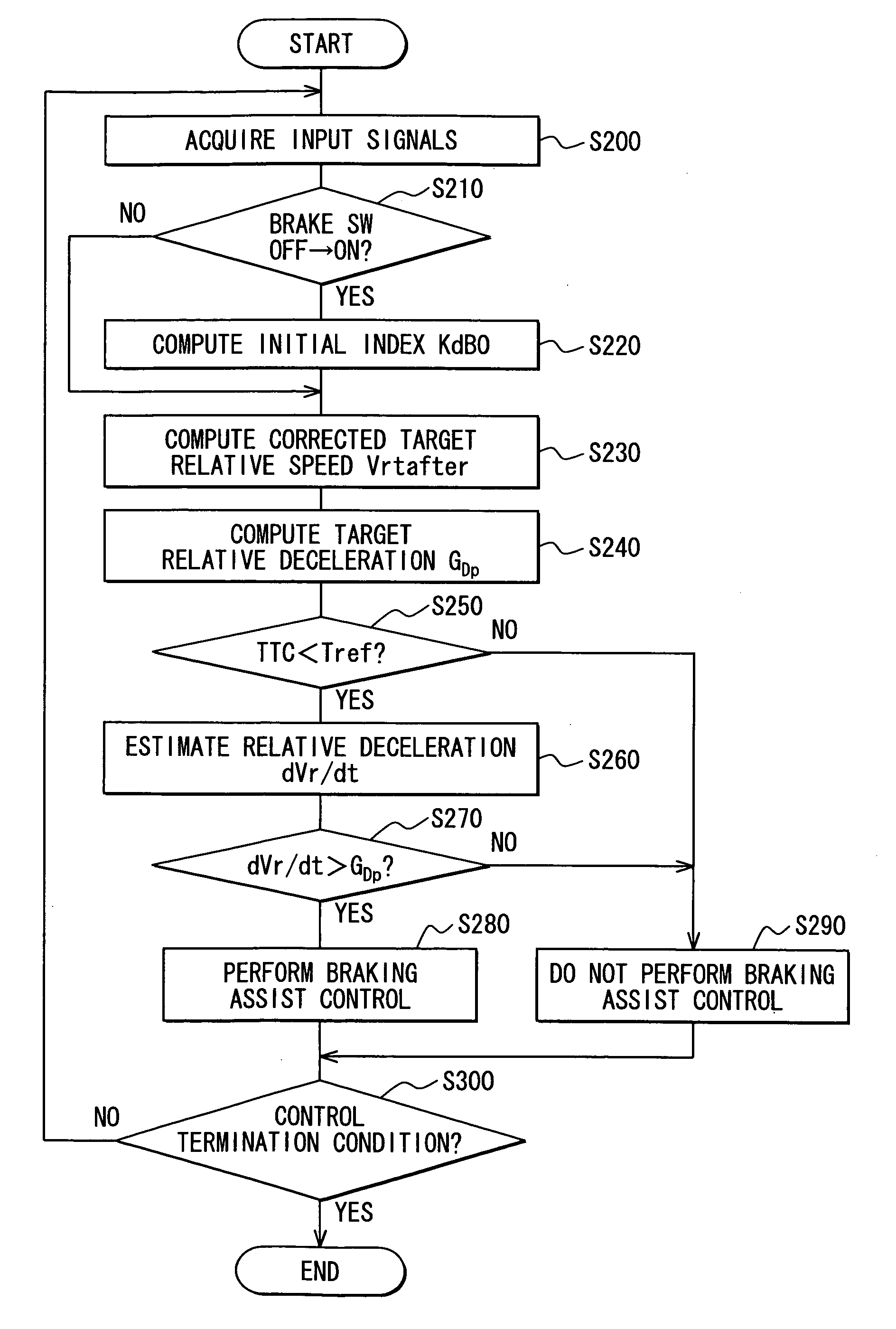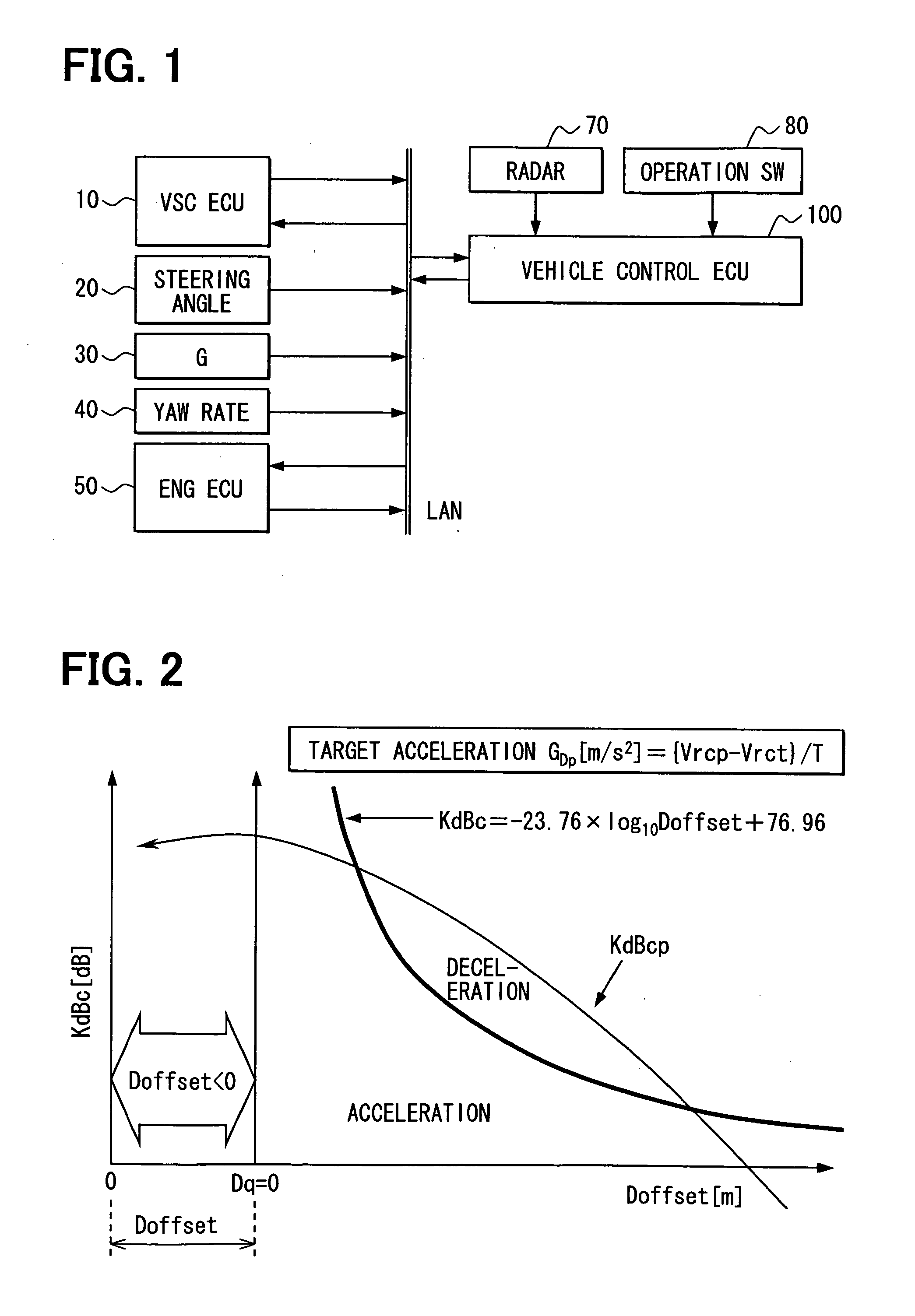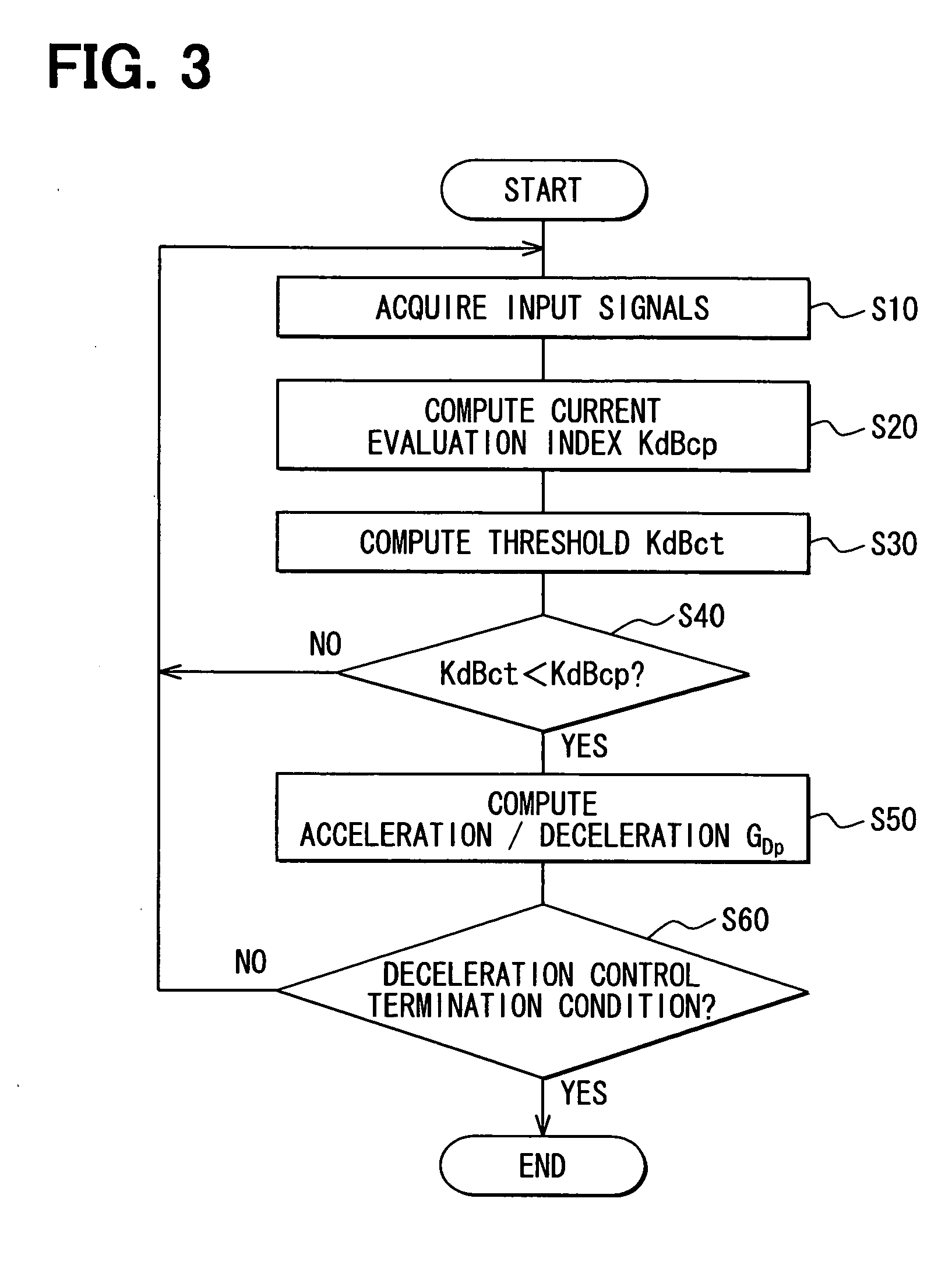Speed control system for vehicles
a technology of speed control and vehicle, which is applied in the direction of braking system, using reradiation, instruments, etc., can solve the problems of variable deceleration output, driver may not be able to feel the comfort of acceleration, and the feeling of deceleration at this time is not always comfortable for the driver
- Summary
- Abstract
- Description
- Claims
- Application Information
AI Technical Summary
Benefits of technology
Problems solved by technology
Method used
Image
Examples
first embodiment
[0063]Referring to FIG. 1, a speed control system for vehicles is applied to a drive assistance system as an example. The drive assistance system is mounted on a subject vehicle (not shown) and constructed of a vehicle stability control (VSC) electronic control unit (ECU) 10, a steering angle sensor 20, a G sensor 30, a yaw rate sensor 40, engine (ENG) ECU 50, a radar 70, an operation switch group (SW) 80, and a vehicle control ECU 100.
[0064]The VSC ECU 10 controls a brake actuator (not shown) that applies braking force to the subject vehicle and has a vehicle stability control function for suppressing skidding of the subject vehicle. The VSC ECU 10 receives information on a target deceleration through an in-vehicle LAN and controls the brake actuator so that this target deceleration is produced in the subject vehicle. The VSC ECU 10 transmits information on the speed (subject vehicle speed) Vs0 and braking pressure of the subject vehicle to the in-vehicle LAN.
[0065]The steering ang...
second embodiment
[0080]In the second embodiment as well, a drive assistance system may be configured in the same way as the first embodiment.
[0081]However, the formula for computation of corrected target relative speed, expressed by Expression 11, is stored in a storage device, such as the ROM, internal to the vehicle control ECU 100 or a storage device provided separately from the vehicle control ECU 100:
Vrtafter=Vr0-Vr0-VroffsetVr0×{Vr0+2.5×D3×10(-1.303D0×D+0.1×KdB0-6.697)}(Expression11)
[0082]When a deceleration control start condition is met, the vehicle control ECU 100 carries out deceleration control using Expression 11 above.
[0083]Expression 11 is obtained by taking the following measure. With respect to the formula for computation of target relative speed expressed by Expression 6, the target relative speed at distance D=0 is offset to the positive side by the offset relative speed Vroffset. From D=D0 to 0, the formula for computation is varied at a relative speed obtained by multiplying the ...
modification to second embodiment
[0093]The formula for computation of corrected target relative speed (Expression 11) used in the second embodiment is an expression obtained by multiplying the target relative speed Vrt that can be computed by Expression 6 by the ratio “a”. Instead, Expression 16, obtained by adding the following term to the target relative speed Vrt that can be computed by Expression 6, may be used in place of Expression 11: a term obtained by multiplying the ratio of the travel distance (D0-D) since the start of control to the distance D0 at the start of control by the offset relative speed Vroffset:
Vrtafter=-2.5×D3×10(-1.303D0×D+0.1×KdB0-6.697)+(VroffsetDo)×(D0-D)(Expression17)
[0094]FIG. 8 illustrates comparison between a curve C3 represented by the formula for computation of corrected target relative speed of Expression 16 and the curve C1 represented by Expression 6 (formula for computation of target relative speed).
PUM
 Login to View More
Login to View More Abstract
Description
Claims
Application Information
 Login to View More
Login to View More - R&D
- Intellectual Property
- Life Sciences
- Materials
- Tech Scout
- Unparalleled Data Quality
- Higher Quality Content
- 60% Fewer Hallucinations
Browse by: Latest US Patents, China's latest patents, Technical Efficacy Thesaurus, Application Domain, Technology Topic, Popular Technical Reports.
© 2025 PatSnap. All rights reserved.Legal|Privacy policy|Modern Slavery Act Transparency Statement|Sitemap|About US| Contact US: help@patsnap.com



